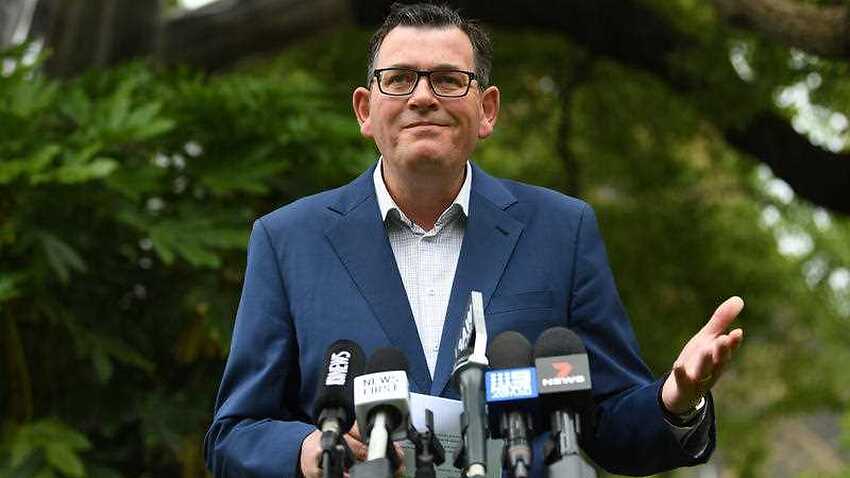Victoria is easing its travel restrictions with NSW, in a move that should free up stretched police resources on Victoria’s borders.
So-called “red zones” in NSW will be eliminated from 6pm AEDT on Friday, with the area of Cumberland to change to the only designated orange zone.
All other parts of NSW will be designated green, the lightest level of restrictions, which only requires travellers to watch for symptoms and get tested if they become symptomatic.
Premier Daniel Andrews said people travelling from the Cumberland area should still get tested.
“We’re extremely happy to see the last red zone in NSW be downgraded,” he said.
People who travel from an orange zone have to self-isolate on arrival in Victoria and get tested within 72 hours of arrival, remaining in isolation until they get a negative result.
Victoria has reached 23 days with no new local coronavirus cases, and 27 cases confined to hotel quarantine, including one new case on Friday.
Police Minister Lisa Neville said on Friday the changes will mean Victoria Police can start scaling back their duties on the NSW border.
Several hundred Victoria police have been on border duty, leading to debate about whether they are being spread too thinly.
Thursday’s Bourke Street driver incident heightened those concerns.
But Ms Neville and Assistant Commissioner Luke Cornelius said police numbers in the Melbourne CBD had been unaffected, also noting the incident was sparked by a number plate check.
“I’m very happy that our standing footprint to cover the city is sufficient,” Mr Cornelius said.
“But look … the COVID emergency and the threats posed by COVID to public health and community safety is in fact our priority.”
Ms Neville said more than 800 police were involved in hotel quarantine and that would increase to more than 1000.
She said the state government was seeking more Australian Defence Force help with the quarantine program.
Also on Friday, Ms Neville was unapologetic about some Australian Open personnel having to wait more than 14 days to be freed from hotel quarantine.
Players and support staff started leaving quarantine on Thursday night, with the last expected out on by midday on Sunday.
But some are unhappy that their quarantine is lasting 15 days.
“We consider day one (to be) day zero, so in a sense it does end up being a bit more than 14 days,” Ms Neville told 3AW radio.
“There have been very rare cases on day 14.
“They’re known exactly when they’re about to come out. I accept they’d love to get out, but we’re not taking any chances on that and we’ve been very clear about it.
“I will be relaxed when we get past the last person leaving hotel quarantine from the Australian Open.”
Tasmania to open border with Sydney
Tasmania will lift border restrictions for travellers from 10 Greater Sydney local government areas on Sunday.
Visitors who have been in the regions will no longer be forced to quarantine from 12.01am AEDT.
It means the island state will be open to all of Australia.
Tasmanian Public Health Director Mark Veitch said the decision was made based on the absence of NSW community cases in the past fortnight.
“(This is) along with extensive contact tracing and testing undertaken by NSW health authorities,” he said in a statement on Friday.
Anyone quarantining in Tasmania because they had been in the 10 regions will be allowed to leave isolation on Sunday. The areas are Blacktown, Burwood, Canada Bay, Canterbury-Bankstown, Cumberland, Fairfield, Inner West, Liverpool, Parramatta and Strathfield.
Tasmania has gone 50 days without recording a COVID-19 infection, with the state’s last case of community transmission in May.
People in Australia must stay at least 1.5 metres away from others. Check your jurisdiction’s restrictions on gathering limits. If you are experiencing cold or flu symptoms, stay home and arrange a test by calling your doctor or contact the Coronavirus Health Information Hotline on 1800 020 080. News and information is available in 63 languages at sbs.com.au/coronavirus.
Please check the relevant guidelines for your state or territory: NSW, Victoria, Queensland, Western Australia, South Australia, Northern Territory, ACT, Tasmania.







